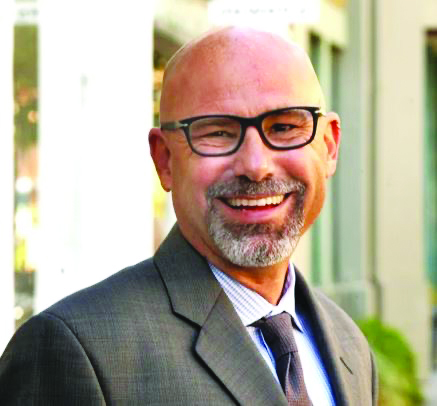Guy Preston, 57, will retire Dec. 1 from his role as executive director of the Santa Cruz Regional Transportation Commission (RTC), a position he’s held since late 2018.
GT: What led to your decision to retire at this time?
GP: I’ve been thinking about retiring for a long time, probably even before I applied for this job. I wanted to see what I could get done in the time I felt that I could dedicate to working for a public agency. I feel like I am in a good place now and I need more time to focus on my personal life right now.
GT: You took the reins at RTC amid one of the most contentious debates with passionate supporters on both sides. What has the experience of the ongoing rail-trail project been like for you?
GP: It’s been fun. Trying to figure out a plan with a community that has mixed feelings about it has been one of the hardest but also the most fun parts of the job. We’ve been able to make progress and I think we are in a good place. We’ve done phenomenally well in terms of securing grants.
GT: What’s next for the rail-trail project?
There is more information that’s needed on the rail side of things. That’s going to be a real challenge. We’ve secured a really talented consultant who is coming on board to help with a project concept report, which will provide a more in-depth look at what the definition of passenger rail in Santa Cruz should be. That way, when we move forward to the environmental review, we have a really stable definition and we’re no longer debating things like light rail vs. commuter, etc. All of this is going to be done with a lot of community input, so that by the time we get to the environmental studies we have a much clearer version of the plan.
It will take a year and a half for the concept report to be completed and it will be a couple more years after that if we continue with the environmental review. That’s the portion that’s not completely figured out yet; there is funding for that and we’d need additional funding for the next steps. We were fortunate to get state funding for the concept report. We’re working on strategies to fund the next component. I think we’re well positioned to do that.
GT: How likely do you think it is that we’ll ever see passenger rail service in Santa Cruz County?
It depends how badly people want it. Once the concept report gets a little farther along and helps people really understand the full costs and impact [of rail service], then the public will need to decide if that’s something they want their tax dollars to go to.
GT: Where do you think the future of transportation is headed? Is it in self-driving (or self-flying) vehicles? More public transportation?
GP: In many ways, the ultimate freedom is to be able to get into your car, whenever you want and go wherever you want, but that’s at great expense to your pocketbook and the environment.
There are a lot of changes happening that might lead people to think they can continue driving their personal car because things are going electric, but there are still environmental and traffic impacts.
The state has made a big push toward trying to direct funding toward more sustainable modes of traffic. California is a leader in this. I don’t think we can completely ignore the highways or roads. Not everyone has a choice and not everyone wants to take public transit; we don’t want to force people to do so. It’s important to consider all modes of travel but it’s really trending toward more sustainable forms. But it’s not going to be all one way. It’s about balancing different needs and considerations.














We are definitely spoiled. While not all can use it, without any solid alternatives such as rail, We will have no alternatives. We need rail, better METRO, rideshare and the trail.